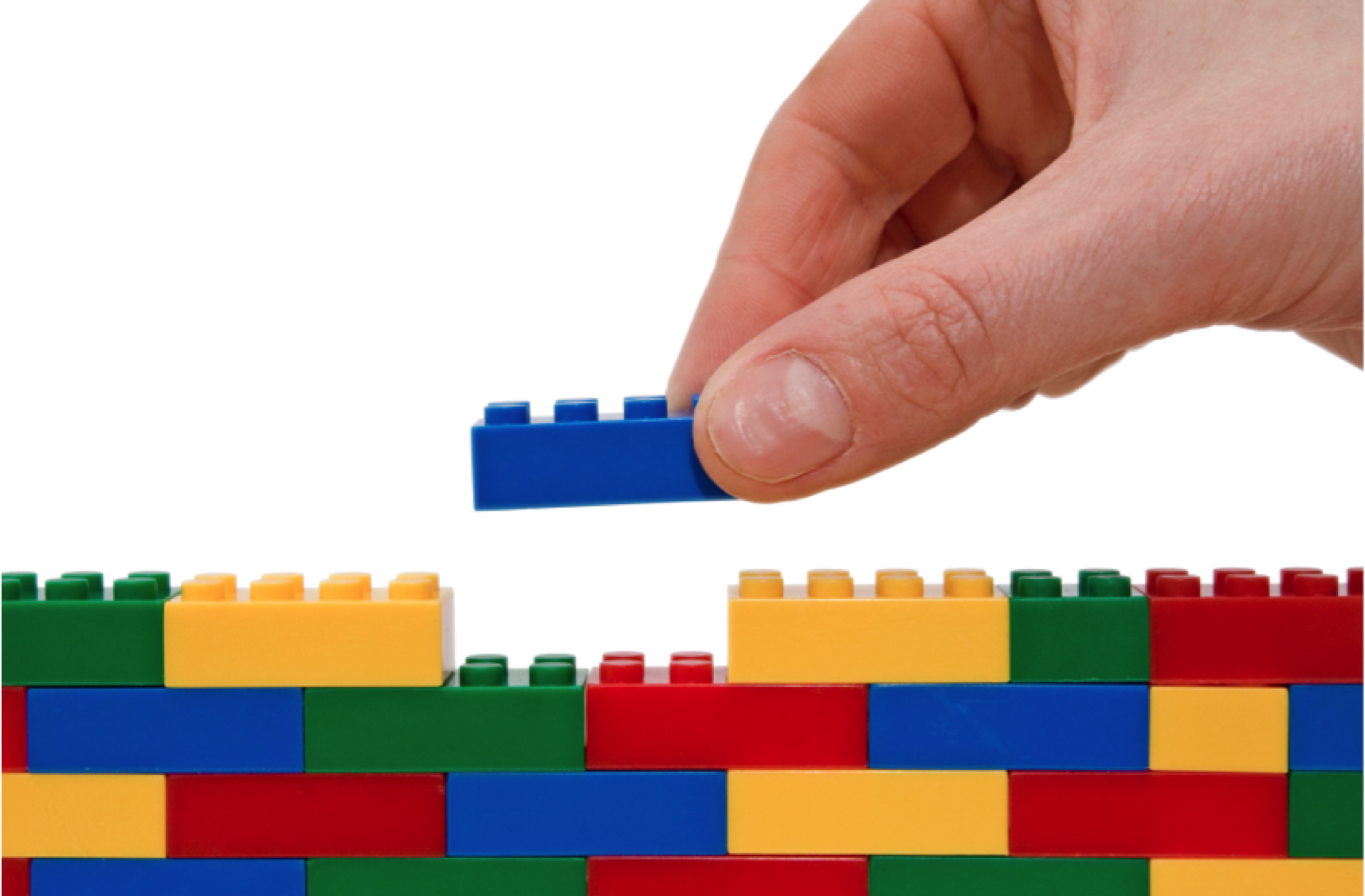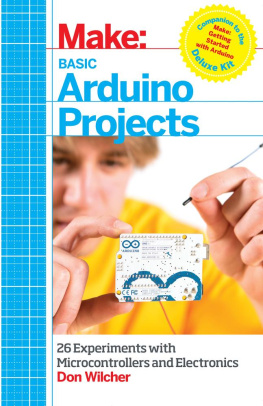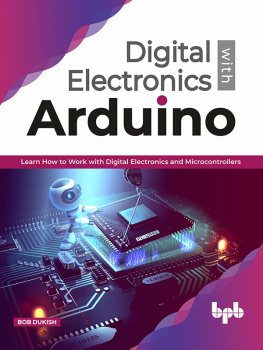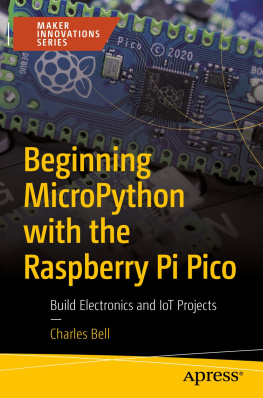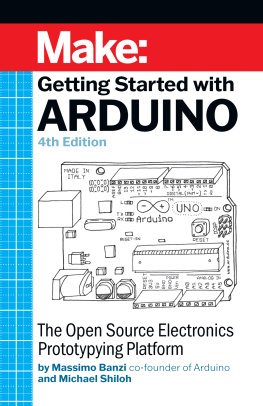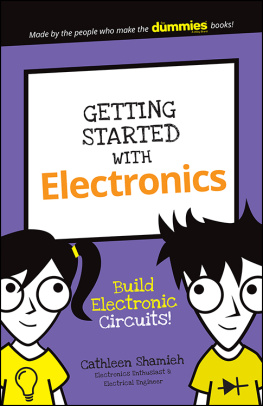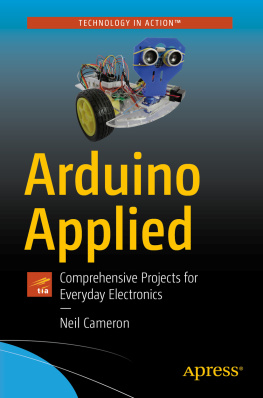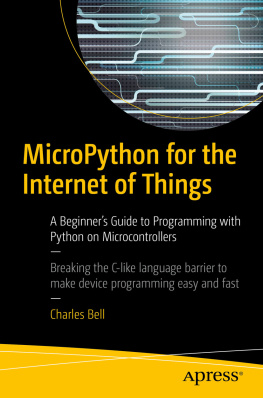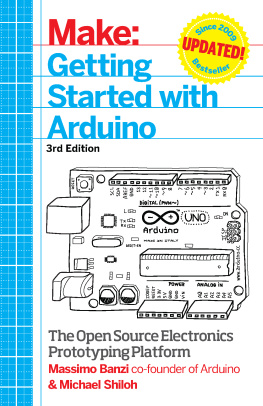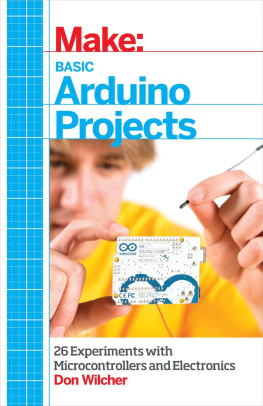Make: Getting Started with littleBits
by Ayah Bdeir and Matt Richardson
Copyright 2015 Ayah Bdeir and Matt Richardson. All rights reserved.
Printed in the United States of America.
Published by Maker Media, Inc. , 1160 Battery Street East, Suite 125, San Francisco, California 94111.
Maker Media books may be purchased for educational, business, or sales promotional use. Online editions are also available for most titles (http://my.safaribooksonline.com). For more information, contact our distributors corporate/institutional sales department: 800-998-9938 or .
- Editor: Brian Jepson
- Interior Designer: David Futato
- Cover Designer: Joe Shouldice
- April 2015: First Edition
Revision History for the First Edition
- 2015-04-07: First Release
See http://oreilly.com/catalog/errata.csp?isbn=9781457186707 for release details.
The Make logo and Maker Media logo are registered trademarks of Maker Media, Inc. Make: Getting Started with littleBits and related trade dress are trademarks of Maker Media, Inc.
littleBits, littleBits logo, Bits, bitSnap, Make Something That Does Something, bitLab, cloudBit, and Snap The Internet To Anything are trademarks of littleBits Electronics, Inc.
Many of the designations used by manufacturers and sellers to distinguish their products are claimed as trademarks. Where those designations appear in this book, and Maker Media, Inc., was aware of a trademark claim, the designations have been printed in caps or initial caps.
While every precaution has been taken in preparation of this book, the publisher and author assume no responsibility for errors or omissions, or for damages resulting from the use of the information contained herein.
978-1-4571-8670-7
[LSI]
Foreword by the Founder
Youve already bought this book, so Im not going to spend any time trying to convince you of the merits of the Maker Movementmy assumption is that youre sold. I assume youre sold on the idea that the gratification that one gets from making somethingwhether in robotics, 3D printing, or foodis very powerful. I assume youre sold on the promise of social, economic, and educational change that can come from spreading the ethos of STEM/STEAM and learning by making. I assume that you believe that promoting a society where people make, remix and share online or in social settingsas opposed to a silo cultureis a good thing.
But Im writing today to talk about an even bigger idea: the idea that we dont just need to be makers, we need to be inventors. I believe that inventors are an evolved breed of makers. Inventors are sometimes problem-solvers that are inventing a solution to a particular problem, and other times they are creative thinkers that are inventing a future that has never been imagined. To elevate making to inventing, we need to equip ourselves with a new language to understand the world around us, and a platform to reinvent it.
We spend more than 11 hours with electronic devices every single day, but most of us dont know how they work, or how to make our own. When I first started working on littleBits in 2008, this number was 7.5. Technology has moved from being an integral part of our lives, to helping define who we are. Its the cars we drive, the phones we own, the alarm systems that keep us safe, the iPads that two year old kids tap and swipe. Yet engineering is mysticized, electronic objects are black-boxed, and if we are honest with ourselves, we have ceased to understand the technological world we live in. And in the meantime, the world is moving at a very fast pace, from the Internet of Things to Artificial Intelligence, each with their own promises and challenges. How can we solve the challenges we face today if we dont understand the world we live in? I believe that to solve 21st century challengeseconomic, environmental, medicalwe dont need more, we need smarter. Tomorrows sense of pride will come from inventing the future.
As Matt and I were writing this book, I reviewed some of the very early images, sketches, and writings from the first days of littleBits as a project. I am incredibly humbled and surpassingly excited about what lies ahead. I hope you enjoy this book and all the love and care that has gone into it, and into littleBits as a product and a company. I would like to deeply thank our team of bitsters who work tirelessly to make this vision come to life. They are some of the most talented and dedicated people I have ever had a chance to collaborate with, and they keep it EPIC. But most of all, I would like to thank the littleBits community, an incredibly diverse community of artists, designers, kids, engineers, hackers, educators, librarians, from all ages, all languages, and interests. You never cease to amaze me with all the stunning, shocking, and delightful inventions you come up with every day.
Now enough of me talking, go ahead and start inventing!
Ayah Bdeir, Founder and CEO, littleBits
Preface
I started working on littleBits in early 2008. I had graduated from the MIT Media Lab and had a prior background in Electrical Engineering. I grew up in Beirut, Lebanon, and to be honest, I never wanted to be an engineer. I am one of four girls and my parents tell me I was always a tinkerer, a maker and very often, a breaker. When it was time for me to decide what I wanted to do in university, my parents and teachers said I owed it to myself to be an engineer because I was good at Math and Science. But I had always found that engineering was dry and not creative. It wasnt until I went to the Media lab that I discovered the power of engineering when combined with creativity. I started to create my own artwork using electronics: wearable electronic fashion, interactive installations, lighting art. A little while after, I realized I was more interested in the tool than the outcome of what I was creating. I had been working with the design agency Smart Design with a colleague Jeff Hoefs, and we wrote a paper called Electronics as Material. Together we designed some of the earliest prototypes of littleBits and this was the beginning of a long research to try to put the power of electronics in the hands of everyone.
My two biggest inspirations were Lego and Object-Oriented programming, two of the most successful modular systems of our time.
Modular Electronics
To understand complex ideas, I believe in the power of modular systems. Modularity allows us to understand complex notions that we may have previously found intimidating, by allowing us to break them down, and build an even more complex idea back up, one building block at a time.
The first inspiration was a big one. In 1947, Lego had managed to take the cement brick, the most important construction unit in the world, and make it an imagination tool, accessible to everyday people. With Lego you didnt have to be an expert to make a complex structure, you learnt intuitively, and could build more and more sophisticated structures one brick at a time. In a few short years, Lego bricks took place in every household. It is estimated that over 400 billion bricks have been produced, or 70 bricks for every person on the planet. We didnt have to be engineers to make walls, houses, buildings, bridges. Lego had taken the building block of our time and made it into the building block of our imagination. Suddenly we gained an understanding of the world around us. Structures that we saw on the streets of city centers that previously appeared huge and complicated were not so unattainable, not so intimidating anymore: you could clearly imagine yourself building them up, one brick at a time.
